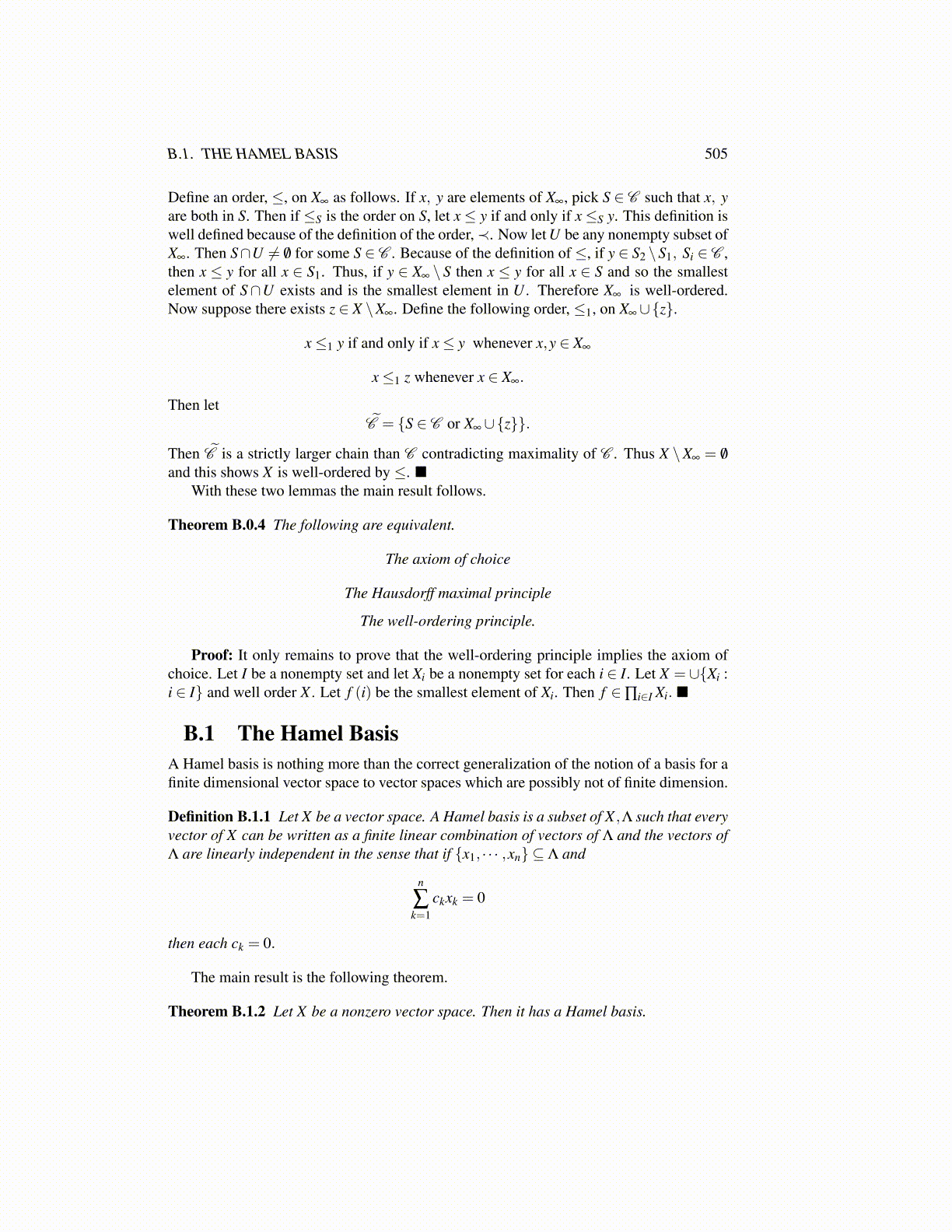
B.1. THE HAMEL BASIS 505
Define an order, ≤, on X∞ as follows. If x, y are elements of X∞, pick S ∈ C such that x, yare both in S. Then if ≤S is the order on S, let x≤ y if and only if x≤S y. This definition iswell defined because of the definition of the order,≺. Now let U be any nonempty subset ofX∞. Then S∩U ̸= /0 for some S ∈ C . Because of the definition of ≤, if y ∈ S2 \S1, Si ∈ C ,then x ≤ y for all x ∈ S1. Thus, if y ∈ X∞ \ S then x ≤ y for all x ∈ S and so the smallestelement of S∩U exists and is the smallest element in U . Therefore X∞ is well-ordered.Now suppose there exists z ∈ X \X∞. Define the following order, ≤1, on X∞∪{z}.
x≤1 y if and only if x≤ y whenever x,y ∈ X∞
x≤1 z whenever x ∈ X∞.
Then letC̃ = {S ∈ C or X∞∪{z}}.
Then C̃ is a strictly larger chain than C contradicting maximality of C . Thus X \X∞ = /0and this shows X is well-ordered by ≤. ■
With these two lemmas the main result follows.
Theorem B.0.4 The following are equivalent.
The axiom of choice
The Hausdorff maximal principle
The well-ordering principle.
Proof: It only remains to prove that the well-ordering principle implies the axiom ofchoice. Let I be a nonempty set and let Xi be a nonempty set for each i ∈ I. Let X = ∪{Xi :i ∈ I} and well order X . Let f (i) be the smallest element of Xi. Then f ∈∏i∈I Xi. ■
B.1 The Hamel BasisA Hamel basis is nothing more than the correct generalization of the notion of a basis for afinite dimensional vector space to vector spaces which are possibly not of finite dimension.
Definition B.1.1 Let X be a vector space. A Hamel basis is a subset of X ,Λ such that everyvector of X can be written as a finite linear combination of vectors of Λ and the vectors ofΛ are linearly independent in the sense that if {x1, · · · ,xn} ⊆ Λ and
n
∑k=1
ckxk = 0
then each ck = 0.
The main result is the following theorem.
Theorem B.1.2 Let X be a nonzero vector space. Then it has a Hamel basis.